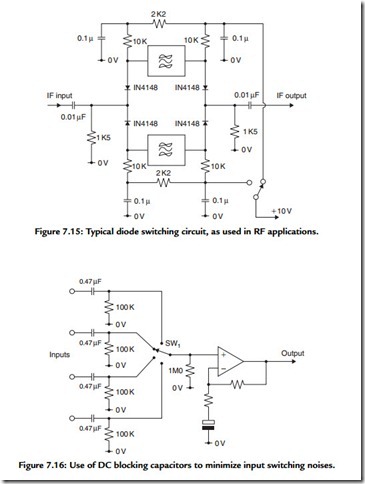VOLTAGE AMPLIFIERS AND CONTROLS
7.9 Preamplifier Stages
The popular concept of hi-fi attributes the major role in final sound quality to the audio power amplifier and the output devices or output configuration that it uses. Yet in reality the preamplifier system, used with the power amplifier, has at least as large an influence on the final sound quality as the power amplifier, and the design of the voltage gain stages within the pre- and power amplifiers is just as important as that of the power output
stages. Moreover, developments in the design of such voltage amplifier stages have allowed continuing improvement in amplifier performance.
The developments in solid-state linear circuit technology that have occurred over the past 30 years seem to have been inspired in about equal measure by the needs of linear integrated circuits and by the demands of high-quality audio systems; engineers working in both of these fields have watched each other’s progress and borrowed from each other’s designs.
In general, the requirements for voltage gain stages in both audio amplifiers and integrated-circuit operational amplifiers are very similar. These are that they should be linear, which implies that they are free from waveform distortion over the required output signal range, have as high a stage gain as is practicable, have a wide AC bandwidth and a low noise level, and are capable of an adequate output voltage swing.
The performance improvements that have been made over this period have been due in part to the availability of new or improved types of semiconductor devices and in part to a growing understanding of the techniques for the circuit optimization of device performance. The interrelation of these aspects of circuit design is considered next.
